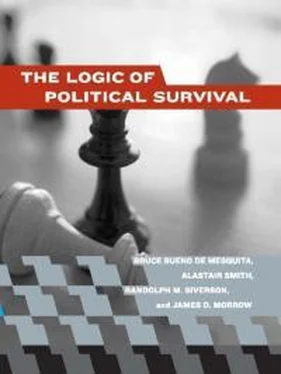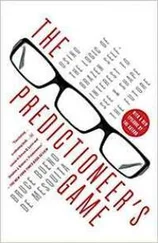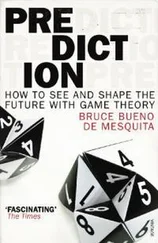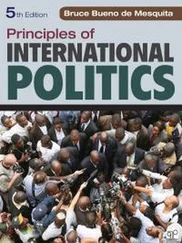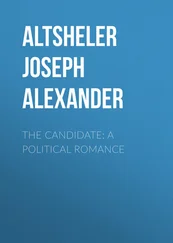The two institutional variables on which we focus are theoretically much more finely calibrated than broad classifications such as democratic, autocratic, monarchic, and so on, and they encompass all nominal regime types. Though W and S are difficult to estimate in practice, in large part because little effort has been put into their measurement to date, they are conceptually continuous variables rather than categorical or ordinal. This means that they have both conceptual properties and mathematical properties that facilitate drawing generalizations about the marginal impact of even small changes in their values on important political factors. This is not true of the more common focus on regime typologies. Therefore, we believe that as we learn more about estimating the values of W and S we will learn more about politics than is possible by focusing on categorical schemes for defining regimes.
There is an additional reason to distinguish between institutional variables like the selectorate and the winning coalition on the one hand, and typologies of regimes on the other. While most systems with large winning coalitions and large selectorates are democratic, a large selectorate and a large coalition do not in themselves define democracy . Of course coalition size and selectorate size are not equivalent to what people seem to have in mind when they speak of democracy. We have already indicated, for example, that the voting rules in presidential systems and list-voting systems more strongly imply the necessity of a larger minimal winning coalition than do single-member district parliamentary systems, yet each of these three types are routinely categorized as equally democratic by typological or categorical methods. To be sure, democracies require larger coalitions than autocracies or monarchies, but different forms of democracy may produce substantially different coalition sizes. Within our model those differences imply variation in tax rates, corruption, immigration, and other important political concerns across the broad nominal category of democratic governments. Likewise, all modern democracies surely have large selectorates, but then so do many rigged-election systems that are patently autocratic. Thus there is likely to be important variation in patterns of behavior across democratic systems, variation that depends on differences in the ratio of coalition size to selectorate size, just as there are likely to be important variations in behavior across all regime types because of variance in the absolute sizes and ratios of W and S .
Democracy is generally associated with a variety of characteristics, of which coalition size is but one. These characteristics include, among others, an independent judiciary, free press, civil liberties, legal constraints on leaders, norms of conduct, and reliance on law. Rather than defining coalition size, as we will show, many of the features that contribute to definitions of democracy are themselves expected, endogenous policy consequences that follow from having a large winning coalition and a large selectorate. Equivalently, though autocracy is not defined by corrupt politicians whose actions imply indifference to the public welfare, we will show that such behavior is an expected consequence of having a small winning coalition and a large selectorate. Therefore, we make an effort to integrate core ideas of democratic theory (Downs 1957; Dahl 1999) and of autocratic theory (e.g., Wintrobe 1998; Olson 2000) into a theory of leadership incentives driven by selectorate size and coalition size. As part of our empirical effort, we try to parse out the impact of coalition size and selectorate size from other attributes of regimes that lead to their classification along a democracy-autocracy continuum. To do so, we suggest operational indicators for W and S in chapter 4, and we calculate the residual variance in a standard indicator of democracy or autocracy that is not explained by W and S . Then we can conduct tests to ascertain the independent effects of coalition size, selectorate size, and other unrelated institutional aspects of nominal regime types. This permits us to evaluate our theory within the broader context of theories of democracy and autocracy. Because particular institutional configurations seem to be necessary but not sufficient conditions for defining democracy, autocracy, military junta, or monarchy, we should expect that the empirical implications of the theory will hold when we relate winning-coalition size and selectorate size to an array of dependent variables, but they may not always hold when relating the residual institutional effects of standard measures of democracy, autocracy, and so on to the same dependent variables.
What Is Missing from Our Theory
Our theory has broad applicability across political systems. Nevertheless, we have excluded important elements of politics. These simplifications of reality are necessary to produce a simple but powerful model. To include all of them would move us from having a simple theory of politics to a description of the politics of every specific polity. Still, we think it important to highlight key simplifications for the reader.
First, we assume that the leader acts as an individual with sole control over policy. Although we have discussed the idea of treating groups of political actors as “the leader,” as in our example of the United States, we will talk about the leader as an individual. Even if we think of the leader as a group in a polity, we will not consider the internal politics of that group. Questions of separation of powers and checks and balances among powerful actors in a government lie outside our theory.
Second, we assume that the implementation of policy is never problematic (except in the case of policy imposed on a foreign rival). The leader collects taxes, allocates resources, and produces public and private goods without concern for inefficiencies in provision. If such inefficiencies exist, it is because they are in the leader’s interest as a way to reward followers. Special exemptions from taxes and corruption are examples of these inefficiencies. Questions then of how to organize bureaucracy to provide government services most efficiently lie outside our theory, except to the extent that one thinks of efficient organization as itself being a public good.
Third, we assume public goods are normal goods. No one disputes the fact that more public goods are better, nor is there any differentiation in the range of public goods that could be provided where the actors might disagree about which public good should take priority. This assumption places questions of ideological competition, which are central to spatial models of electoral competition, outside our model. Ideology appears in our model only to the extent that affinity captures ideological similarity between leaders and followers.
Fourth, we assume that all members of our groups—leaders and challengers, coalition members, the selectorate, and the disenfranchised—are identical except for their affinities for one another. Questions of individual competence or particular interests (beyond an interest in more private goods) are not covered in our model. Representation, as it is generally understood to concern how differences in opinion or interest are represented, does not occur in our model. Of course, the leader does represent the interests of her winning coalition to the extent that she provides public and private goods to them.
Having acknowledged these assumptions, we add that our theory leads to important insights into all of these questions. Representation can be thought of as a problem of layers of winning coalitions within one political system. The representative has a winning coalition in his district that elects him, and, in turn, is a member of the selectorate of the executive in parliamentary systems with a vote of no confidence by virtue of his role in making and breaking prime ministers. We do not pursue such elaborations of our theory to address these questions, because doing so would take us too far from our goal of developing our argument, deducing its consequences for a wide range of government actions, and then testing those conclusions. We hope to pursue some of these possibilities in future research and invite others to do so as well.
Читать дальше
